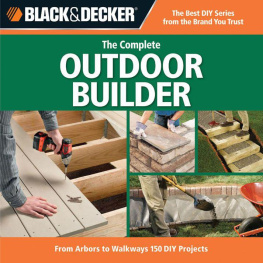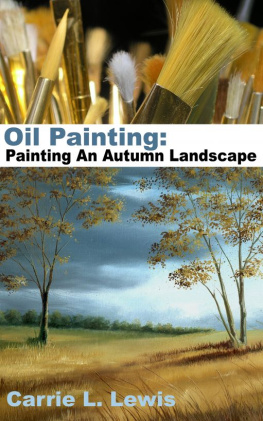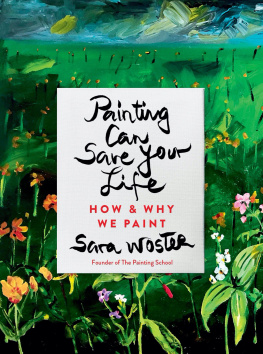
Heres How
PAINTING
29 Projects with Paint

Contents

Introduction

You may think that painting walls is such an obvious skill that you have no need for a book on the subject. But do you know the difference between eggshell enamel and gloss enamel, and when to use each? Are you aware of the proper painting sequence for elaborate paneled cabinets? Do you know what a faux serpentine paint finish is, and how to achieve it? And have you mastered the skill of mimicking textured plaster finishes with ordinary paint?
If not, then this ingenious, inexpensive book is for you. For much less than the cost of a good paintbrush, youll learn a remarkable amount of basic painting information, as well as detailed instructions for creating 18 specialty finishes, from color washes to pickled paint finishes for a classic antique look.
The book opens with some basics on paint chemistry and the tools and materials youll need for painting walls, woodwork and furniture. Youll also learn about some of the specialty tools that now make painting easier and quicker, including power rollers, airless sprayers, and paint additives. Next, youll get a refresher course on basic application techniques with brushes and rollers. You may think you already know this, but have a look; youll be surprised by insights that will help you get truly professional results.
The heart of the book, though, is the central section, where youll discover the detailed recipes for painting specific surfaces, as well as for achieving all the most popular specialty finishes. These are finishes that are often presented in specialty seminars at paint stores and home centers, but here, for less than $10, youll get no-fail instructions for successfully creating all of them. And of course youll also learn how to clean up your work site and tools.
Heres How: Painting is a remarkable bargain. For the cost of a good magazine, you now have a solid instructional manual for virtually any painting project you want to tackle.
 1. Paint Selection
1. Paint SelectionPaints are either water-base (latex) or alkyd-base. Latex paint is easy to apply and clean up, and the improved chemistry of todays latexes makes them suitable for nearly every application. Some painters feel that alkyd paint allows for a smoother finished surface, but local regulations may restrict the use of alkyd-base products.
Paints come in various sheens. Paint finishes range from flat to high-gloss enamels. Gloss enamels dry to a shiny finish, and are used for surfaces that need to be washed often, like walls in bathrooms and kitchens, and for woodwork. Flat paints are used for most wall and ceiling applications.
Paint prices typically are an accurate reflection of quality. As a general rule, buy the best paint your budget can afford. High-quality paints are easier to use and they look better than cheaper paints. And because quality paints last longer and cover better than budget paints, often requiring fewer coats, they are usually less expensive in the long run.
Always use a good primer to coat surfaces before painting. The primer bonds well to all surfaces and provides a durable base that helps keep the finish coat from cracking or peeling. When using deep colors, choose a tinted primer to reduce the number of coats of paint necessary to achieve good coverage.

How to Estimate Paint
| 1) Length of wall or ceiling (feet) |
| 2) Height of wall, or width of ceiling |
| 3) Surface area | = |
| 4) Coverage per gallon of chosen paint |
| 5) Gallons of paint needed | = |
 How to Select a Quality Paint
How to Select a Quality Paint
Paint coverage (listed on can labels) of quality paint should be about 400 square feet per gallon. Bargain paints (left) may require two or even three coats to cover the same area as quality paints.

High washability is a feature of quality paint. The pigments in bargain paints (right) may chalk and wash away with mild scrubbing.
Paint Sheens

Paint comes in a variety of surface finishes, or sheens. Gloss enamel (A) provides a highly reflective finish for areas where high washability is important. All gloss paints tend to show surface flaws. Alkyd-base enamels have the highest gloss. Medium-gloss latex enamel creates a highly washable surface with a slightly less reflective finish.
Like gloss enamels, medium-gloss paints (B) tend to show surface flaws. Eggshell enamel (C) combines the soft finish with the washability of enamel. Flat latex (D) is an all-purpose paint with a soft finish that hides surface irregularities.
 2. Tools & Equipment
2. Tools & EquipmentMost painting jobs can be done with a few quality tools. Purchase two or three premium brushes, a sturdy paint pan that can be attached to a stepladder, a supply of disposable pan liners, and a variety of roller covers. With proper care, high-quality brushes will last for years.
Brushes made of hog or ox bristles should be used only with alkyd-base paints. All-purpose brushes blend polyester, nylon, and sometimes animal bristles. Choose a straight-edged 3" wall brush, a 2" straight-edged trim brush, and a tapered sash brush.

 How to Choose a Paintbrush
How to Choose a Paintbrush
Next page














 1. Paint Selection
1. Paint Selection

 How to Select a Quality Paint
How to Select a Quality Paint



